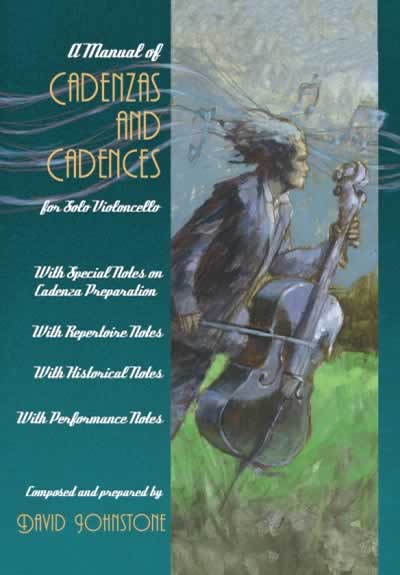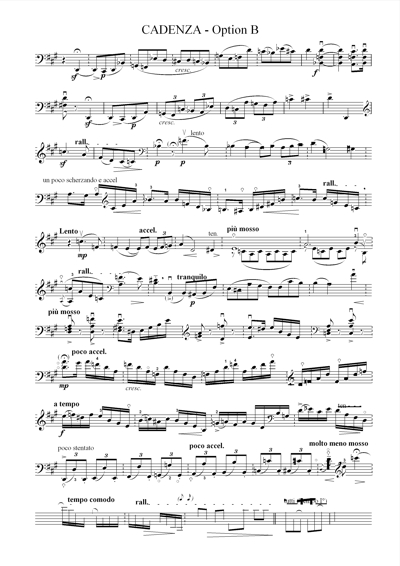For solo violoncello
This manual is probably the most complete volume of ‘Cadenzas’ and ‘Cadences’ ever published for the Violoncello, and is designed for professional soloists and players, promising students, the Cello Departments of Music Colleges and Conservatoires, and for Reference Libraries. It includes a wealth of written information about the history of the works, the composers’ activities at the time of the compositions, and other relevant information regarding these special cadenza moments. Varied offerings of cadenzas are set out from many of the principal cello concertos, sometimes with more than one example included for a particular movement. The following composers are included: C.P.E.Bach, Boccherini (two concerti), Stamitz (two concerti), Haydn (two concerti), Schumann, Volkmann, Tchaikovsky (two works), Honegger, and Johnstone.
How does one play a Cadenza? Certainly a most pertinent question… In the past, students might have asked ‘can you teach jazz or is it in-born and instinctive, to be developed only by those with the gift?’ Today, jazz has been introduced as a main-stream subject in many of the important conservatoires of the world. The same should perhaps apply to cadenzas. Their performance can be left to instinct, but is usually far safer with some ‘guidance’. The way to perform them convincingly can be more-or-less self-taught, but usually needs both a good ‘professor’ and someone of experience – who knows exactly what it is like to be in the heat of the moment on the concert platform.
The present author of ‘Cadenzas and Cadences’ has had the opportunity, and the privilege, of performing nearly all the standard ‘great’ concertos with orchestras, and has, on the whole, thoroughly enjoyed those special cadenza moments. However, when the author has occasionally sat on an exam panel in a conservatoire, or on an audition panel for an orchestral job, he has frequently encountered instrumentalists who have played reasonably well during the entire movement - up until the cadenza, when suddenly ‘nerves’ take over, and hamper its execution. So we have to learn what makes a particular cadenza ‘tick’. However, these objectives are best learned from mentors who truly understand what the soloist is feeling, rather than from a book with the sole aim of getting students to pass an examination or audition.
On the other hand, the author does feel that the uneasiness associated with cadenza execution derives also from a conspicuous lack of material – meaning that there are very few choices available in the playing and planning of cadenzas. We should remember that composing, improvising, arranging and general experimenting always played a large part in cadenza playing through the centuries. Some form of improvisation is beneficial, and helps to gain even more understanding – all the cadenzas/cadences in this publication are only a base from which to work. The composer is obviously very grateful when a mention of his cadenzas is made in performance, so that they may become available sources for other performers. Even more important, however, is that they should serve for future developments, rather like the many Scottish celtic melodies which have subtly changed their shape and decoration over the last 250 years or so, sometimes little resembling the originals!
Serious attempts at producing volumes of well-organized cadenzas for the cello could be counted almost on one hand, throughout history. To the present composer-cellist, this seems so strange, when these moments form such an important part of each concerto that contains a cadenza. What is more, finding suitable cadenzas that are eminently playable by good students, when first approaching the work, is even more of a problem. Such examples are virtually non-existent in a collectable set or volume whose objective is to be of optimum service to classical, romantic and twentieth-century styles. So, in a nutshell, that is what this volume tries to do – to assemble playable cadenzas and cadences that sound impressive – suitable for auditions, exams, and for public performances with orchestra.

